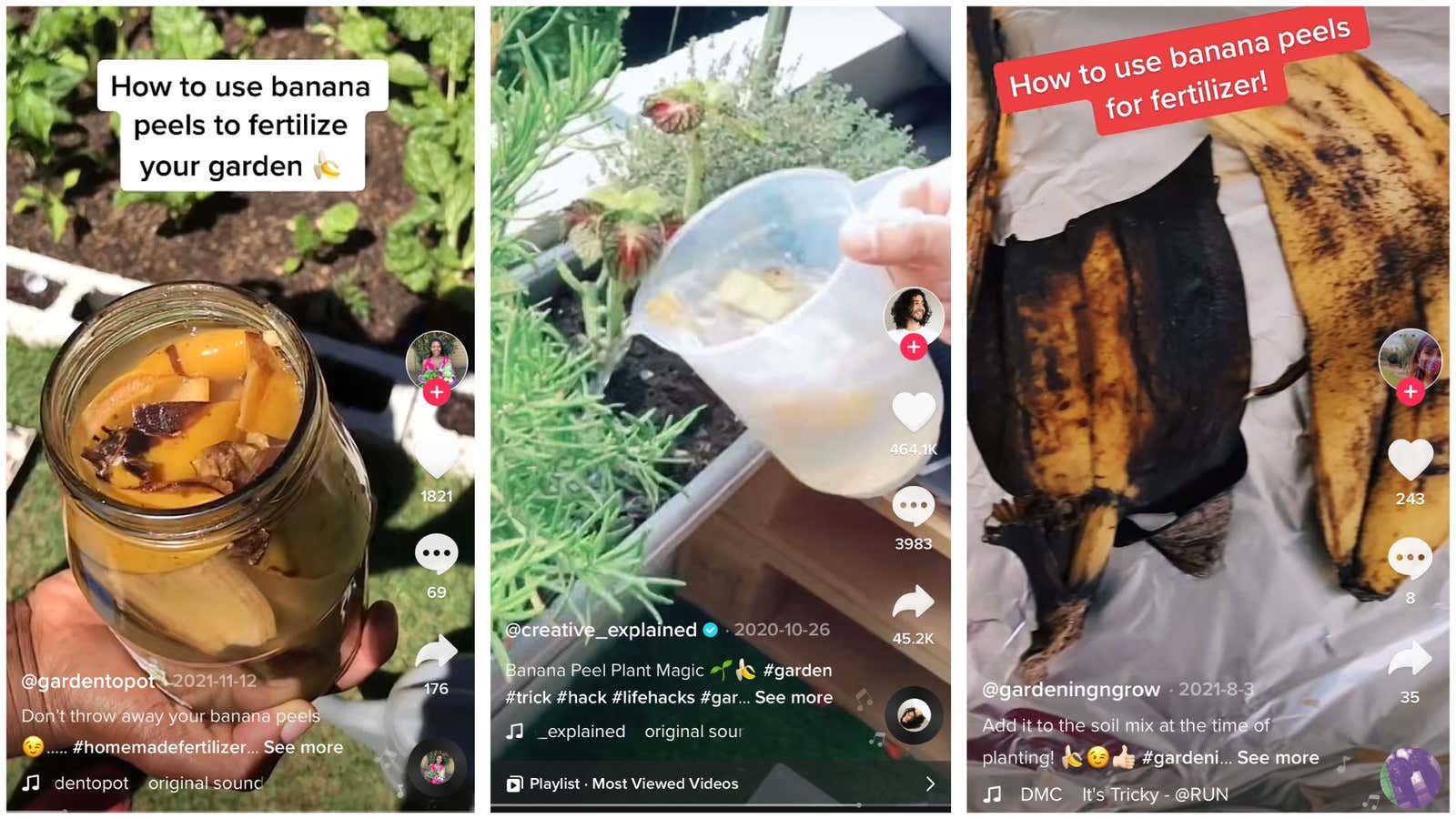Stop Adding Banana Peels to Your Plants (and Do This Instead)

To hear it from TikTok, banana peels are a great fertilizer for your garden due to their high potassium content and the fact that you get them practically for free (assuming you eat bananas). The reality is much less exciting.
Pointless gardening advice has always been passed on, sometimes literally by word of mouth, through books, newsletters or Facebook comments. TikTok is just especially good at what it does because you can deliver compelling footage while almost completely eliminating any context, source material, or opportunity for discussion. So let’s dig.
How can banana peel be used in the garden?
A common recommendation is to soak banana peels in water and use the resulting liquid to water vegetables or flowers. There are also options where you dehydrate the banana peel and chop it or cut it into pieces and bury it in your garden soil.
Presumably, the peel contains a large amount of potassium, which is one of the nutrients needed for plant growth. If you buy packaged fertilizers, you will notice that there are three numbers on the front of the fertilizer, indicating the percentage of nitrogen, phosphorus and potassium (known as NPK, after the chemical abbreviations for these elements). For example, 1-1-1 fertilizer contains all three components in equal proportions.
Are Banana Peels Really Rich in Potassium?
When we talk about nutrition, bananas are famous for their high potassium content. But if you look at the real numbers , you will find that a potato has more potassium than a banana. So are canned tomatoes, lima beans, carrot juice, parsnips, orange juice, kiwi fruit, a cup of yogurt, or a three-ounce serving of tuna. Bananas are not a source of potassium, they are just one of many foods that can provide the body with nutrients.
So how is a banana peel different from other potassium-containing fertilizers? One gardener calculated and found that fresh banana peels have an NPK of 0.1-0.1-2.3 . Soaking the peel in water won’t help remove the potassium from the peel, so if you use the tea method, you’ll get even less potassium. Meanwhile, you can buy langbeinite 0-0-22 fertilizer for 32 cents a pound.
What should I actually do with a banana peel?
If you really want to fertilize your garden with kitchen waste, there is an effective and time-tested method to do so that also has the advantage of providing nitrogen and other nutrients to the soil. This is called composting.
We have a composting guide here . Once you’ve set up a compost bin, you can simply toss banana peels into it , along with other fruits, vegetables, and plant material (my family includes paper towels and dried garden waste).
The result is a nutrient-rich soil-like substance that you can add to your garden soil before the start of the growing season or use to feed established plants. And it’s a lot less work than making a watery banana smoothie every time you want to get rid of a few skins.